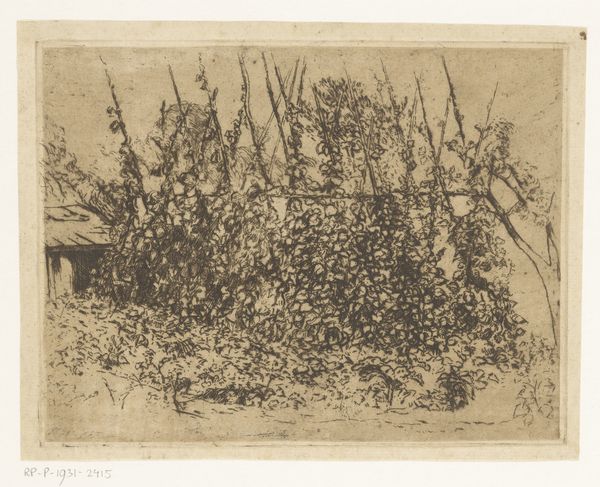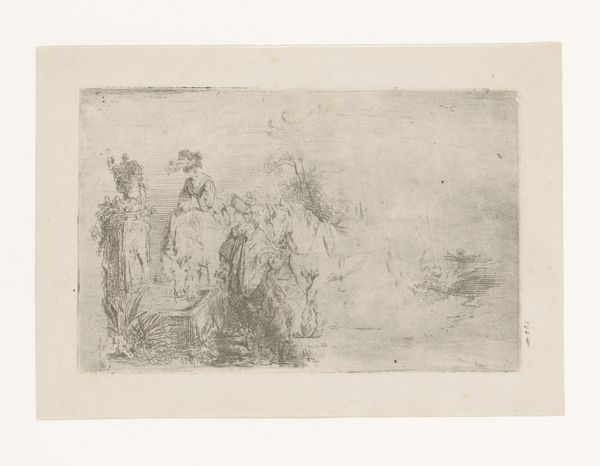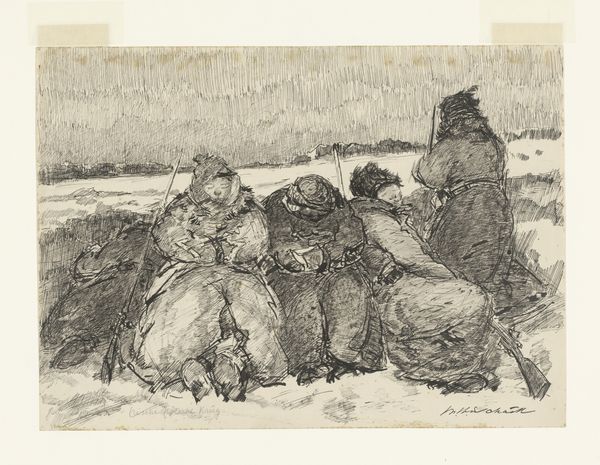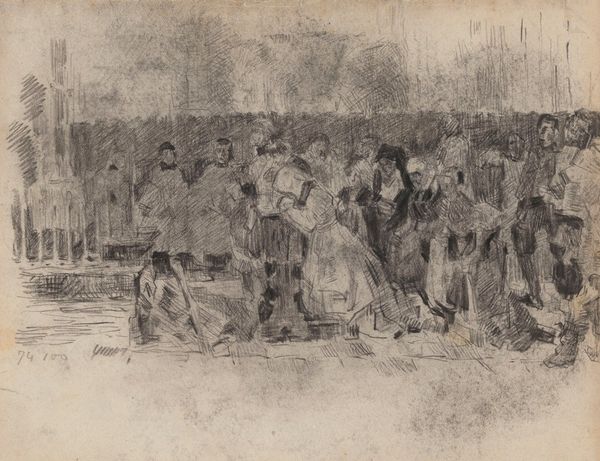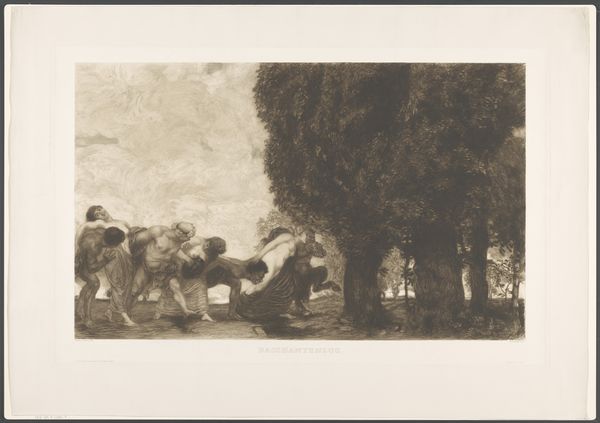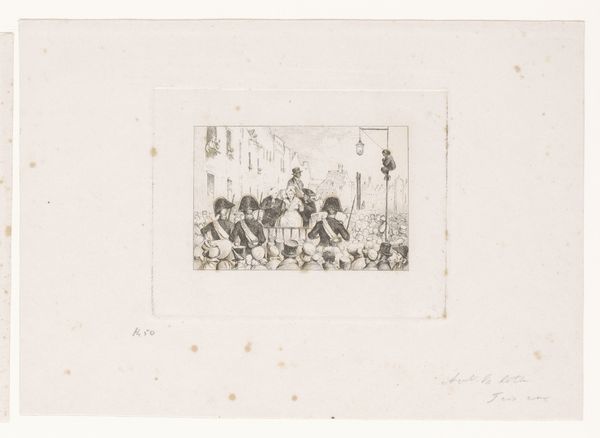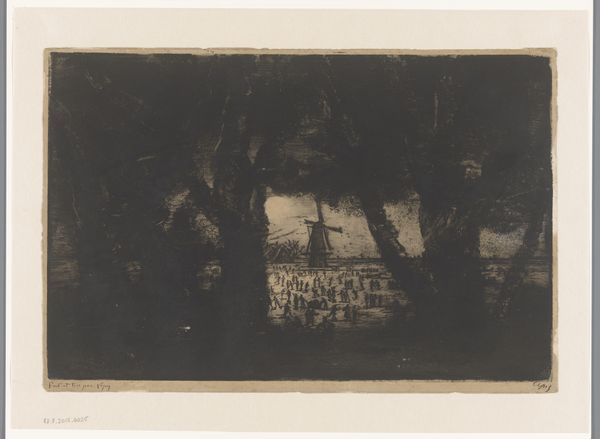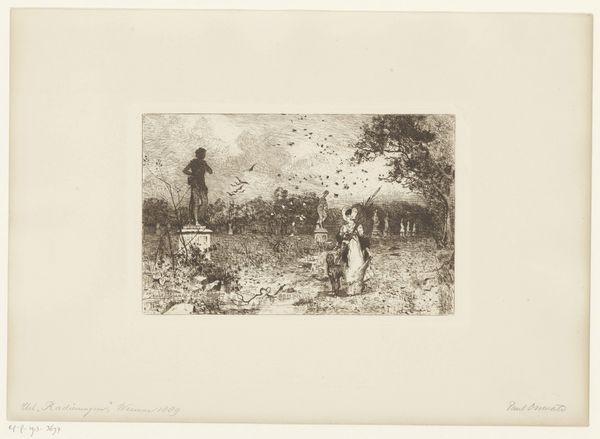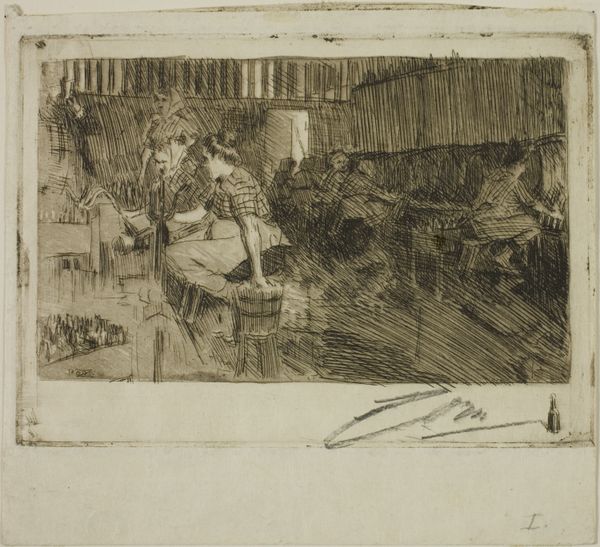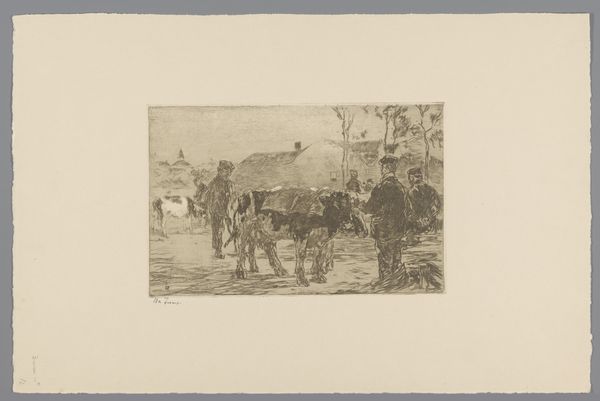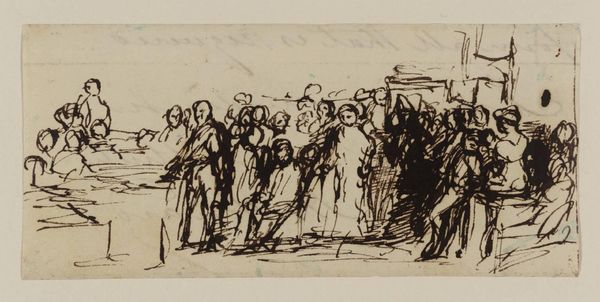
print, etching
# print
#
impressionism
#
etching
#
old engraving style
#
landscape
#
genre-painting
Copyright: Public domain
Editor: This is Paul-Albert Besnard's "Neuilly Fair," an etching from 1885. There's almost a frenetic energy to it, the figures and the fairground are suggested with these very quick, expressive lines. How do you approach a piece like this? Curator: The composition is dominated by a contrast between the tightly clustered figures in the foreground and the hazy, almost abstract representation of the fair in the background. Observe the artist’s use of line. Notice how the density and directionality of the etched lines define form and create a sense of depth. The artist juxtaposes distinct textures within the composition. The rough, almost chaotic border contrasts with the more controlled, yet still expressive, lines used to depict the figures and the fair itself. Consider also, the absence of sharp detail. Editor: That’s interesting – the rough border feels like it's part of the scene rather than just a frame. Does the lack of detail suggest anything about Impressionism in prints versus painting? Curator: It moves beyond mere depiction to evoke a feeling, a mood. Look closely at how Besnard varies the line quality to suggest different materials and textures – the weight of clothing, the fleeting light on faces. Consider the relationship between line, form, and space. How do they contribute to your understanding of the fair and the figures within it? Editor: I see what you mean about the textures. The layering of those dark lines gives the clothes substance. And I didn't realize how much the border contributed to the overall feeling. Curator: Indeed. By analyzing the formal elements such as line, texture, and composition, we can decode how Besnard communicates not just what he sees, but how he feels about "Neuilly Fair". Editor: That makes a lot of sense. I’ll definitely pay more attention to texture and framing from now on!
Comments
No comments
Be the first to comment and join the conversation on the ultimate creative platform.
